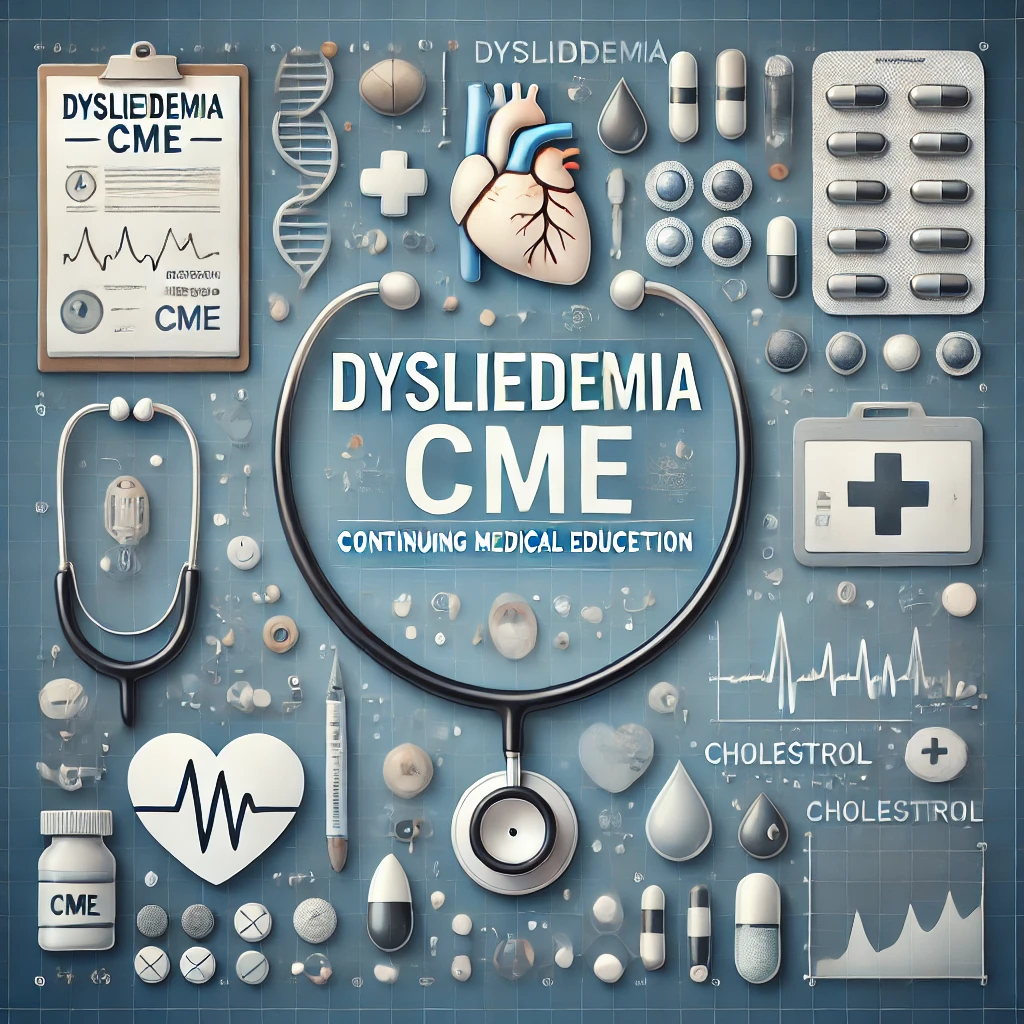Impact of CME on Dyslipidemia Care and LDL-C Management Practices

Dyslipidemia, characterized by abnormal levels of cholesterol and triglycerides in the blood, is a significant risk factor for cardiovascular disease (CVD). It often involves elevated low-density lipoprotein cholesterol (LDL-C) levels, low high-density lipoprotein (HDL) cholesterol, or elevated triglyceride levels. Effective management of LDL-C is crucial for reducing the risk of stroke, heart attack, and other cardiovascular events. Recent advancements in dyslipidemia management have focused on achieving optimal LDL-C levels to mitigate cardiovascular risk.
However, as scientific understanding evolves and new therapeutic options emerge, healthcare professionals face the ongoing challenge of staying updated with the latest evidence-based practices to ensure optimal patient outcomes. This is where Continuing Medical Education (CME) becomes indispensable. In this guide, we will understand the growing importance of CME programs in enhancing dyslipidemia care and LDL-C management practices.
The Importance of LDL-C Management
Low-density lipoprotein cholesterol (LDL-C) is a primary target for intervention in dyslipidemia. Elevated LDL-C levels are strongly associated with a higher risk of atherosclerotic cardiovascular disease, such as coronary artery disease, stroke, and peripheral artery disease. Achieving and maintaining optimal LDL-C levels is essential for reducing the risk of cardiovascular events.
The Evolving Landscape of LDL-C Management
Historically, statins have been the cornerstone of LDL-C management. These medications have proven highly effective in reducing LDL-C levels and, consequently, the risk of cardiovascular events. However, recent advancements have introduced new Non-statin therapies, such as PCSK9 inhibitors, which have emerged as significant players in LDL-C management, offering additional options for patients who are unable to achieve optimal results with statins alone.
Furthermore, evolving guidelines and clinical trial data continuously refine our understanding of optimal LDL-C targets and treatment strategies for various patient populations. As a result, healthcare professionals must stay informed about these developments to provide personalized and effective care. Here, the importance of CME courses becomes evident. Let us delve into the crucial role of CME programs in enhancing LDL-C management practices.
The Role of CME in Dyslipidemia Care
Continuing Medical Education (CME) serves as a vital mechanism for healthcare professionals to stay informed about the latest developments in LDL-C management. Through dedicated dyslipidemia CME courses and webinars, clinicians can deepen their understanding of emerging therapies, updated clinical guidelines, and practical strategies for implementing these changes in their practice. Here’s how CME contributes to enhancing LDL-C management practices:
- Updating Knowledge and Skills: CME activities can help healthcare professionals stay informed about the latest evidence-based guidelines for LDL-C management. This includes information on new medications, treatment algorithms, and risk stratification tools.
- Practical Skills: CME programs can equip healthcare professionals with practical skills for assessing LDL-C risk, selecting appropriate medications, and managing side effects.
- Case-Based Learning: Case-based learning can help healthcare professionals apply theoretical knowledge to real-world clinical scenarios. This can improve their decision-making abilities and enhance patient care.
- Interprofessional Collaboration: CME activities can foster collaboration between different healthcare professionals involved in LDL-C management, such as cardiologists, primary care physicians, and pharmacists. This can enhance communication and coordination of care.
- Patient Education: CME programs can provide healthcare professionals with strategies for educating patients about the importance of LDL-C management and how to adhere to their treatment plan.
- Addressing Knowledge Gaps: CME helps address knowledge gaps by focusing on specific areas where clinicians may need additional support or information. For instance, a CME course may target areas such as the management of patients with familial hypercholesterolemia or the integration of lifestyle modifications into LDL-C management. By addressing these gaps, CME ensures that clinicians have the necessary knowledge and tools to provide comprehensive care.
Translating Knowledge into Practice
The ultimate goal of CME is to translate knowledge into improved patient care. By enhancing their understanding of LDL-C management, healthcare professionals can:
- Optimize treatment decisions: Make evidence-based decisions about the most appropriate therapies for individual patients, considering their risk factors, comorbidities, and preferences.
- Identify and address barriers to adherence: Understand the challenges patients may face in adhering to treatment plans and develop strategies to improve medication adherence and lifestyle changes.
- Monitor and adjust therapy: Effectively monitor patient progress, identify potential side effects or complications, and adjust treatment plans as necessary to achieve optimal outcomes.
- Promote patient education and engagement: Encourage patients to take active participation in managing their condition through education, shared decision-making, and ongoing support.
Conclusion
Indeed, the role of Continuing Medical Education (CME) in enhancing Dyslipidemia care and LDL-C management practices cannot be undermined. As the field of cardiovascular medicine keeps evolving, CME provides healthcare professionals with the essential knowledge and skills needed to stay current with advancements in LDL-C management. By participating in dedicated Dyslipidemia CME courses and webinars, clinicians can ensure they are well-equipped to implement the latest evidence-based practices, optimize patient outcomes, and contribute to the overall improvement of cardiovascular care.
Incorporating ongoing education into clinical practice is not just a professional obligation but a commitment to ensure the highest possible standard of care to patients. As we advance our understanding of LDL-C management and its impact on cardiovascular risk, CME will remain a cornerstone in driving progress and excellence in patient care.






